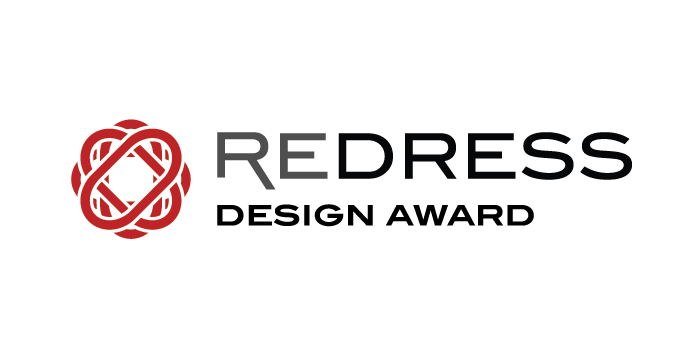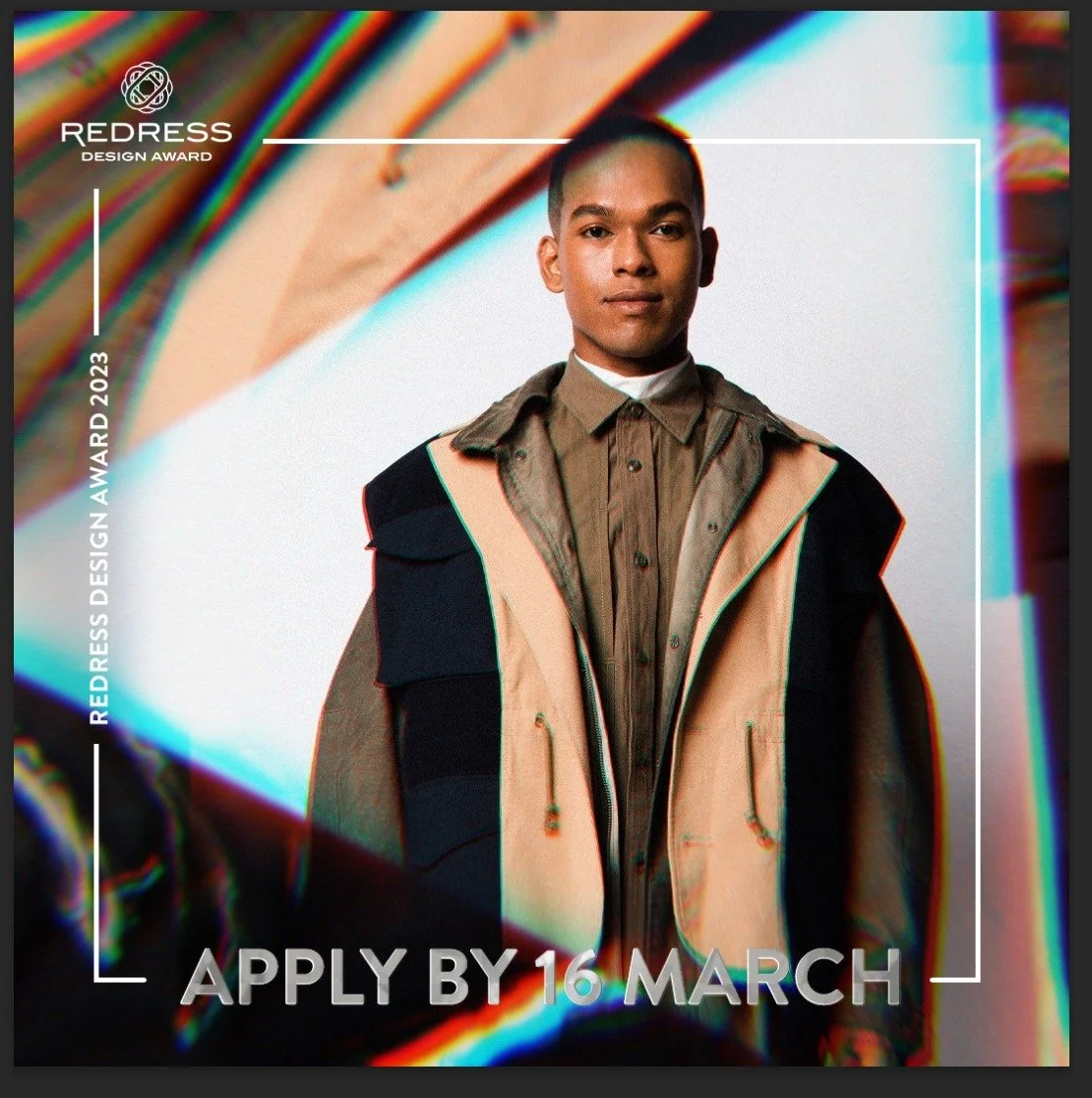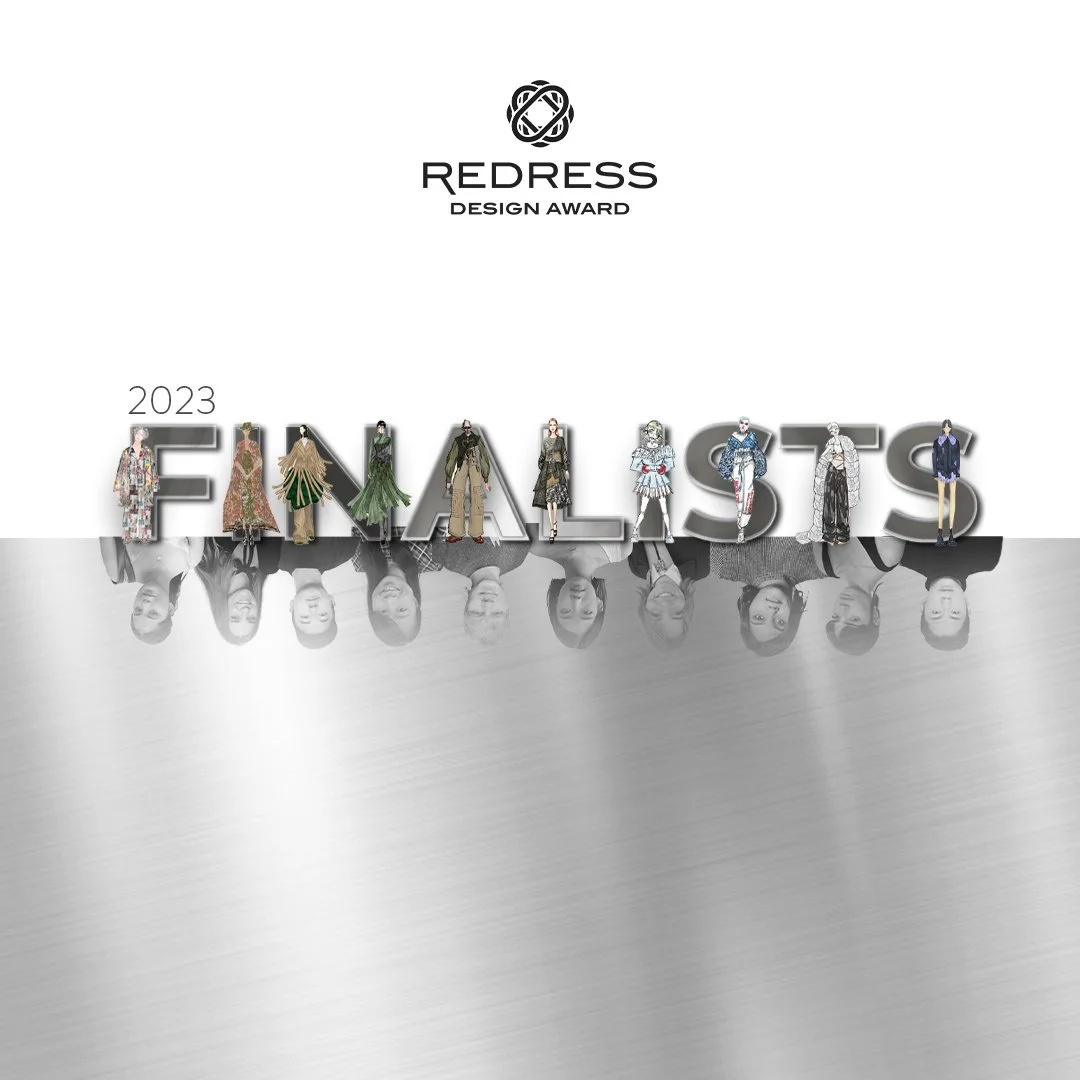FIRST PRIZE WINNER JOURNEY: CRAFTING A CAPSULE WITH THE BIG LEAGUES
After winning the Redress Design Award 2022, Federico Badini Confalonieri began working with the Timberland design team in Europe, gaining insight from VF Corporation’s sustainability and responsibility team. As part of the collaboration, he also had the opportunity to travel and spend a few days on site with the team to work on the development of his designs, which form part of a capsule set to launch next Earth Day. A year on, Federico is still involved in sampling and marketing for his collaboration. We caught up with the designer to hear about his experiences.
What were your first impressions as you began your journey with Timberland?
Arriving at VF’s offices in Stabio, Switzerland, I was impressed by the modernity and massive size. I was warmly welcomed by everyone. The Timberland fashion design special capsule collections team is a relatively small group of dynamic people, with three designers, three product developers, and four in merchandising. I also met the bigger accessories, textile, and main line team, which is dedicated to the core garment products.
I had the opportunity to take a look into the Timberland archive, and it was especially interesting to see the diverse collaborations with external brands and designers carried out throughout the brand’s history. Different designers, each with their own aesthetic, have reinterpreted the brand’s identity and classical style, offering a diversity of original designs through collaborations.
It feels empowering to work for a big group containing many important brands all focusing on outdoor style in different ways.
You’ve always had an interest in textile innovations. How has Timberland inspired you in this area?
It was important to me that my designs could fit within the Timberloop takeback initiative, a Timberland programme that calls for a higher level of sustainable innovation. In fact, the fabrics selected for my project are to be made of 100% fibre-to-fibre chemically recycled polyester coming from fabric waste, which retains more value compared with mechanically recycled polyester from plastic bottles, which is considered downcycling.
We had an interesting discussion with the fabric team, who shared about innovations they discovered at textile fairs and proposed some solutions for the new designs. We also gained insights about the scalability of other material innovations and the current challenges in applying them, though the team is working to integrate them in future collections. Those meetings widened my perspective about sustainable applications and its challenges, sourcing, and scalability in a big company like Timberland.
What was it like working with the different teams at Timberland?
It was interesting to see this brand, whose identity is highly linked to shoes, expanding their apparel offering. I had the opportunity to observe the diverse dynamics of the brand and how their designs must fit in a narrative, created in collaboration with the shoe design team, and the main line products team which create designs made mostly of classical carryovers, where colours and shapes are already defined.
Research was very much trend-oriented and began with brainstorming from supporting materials from trend-watching agencies. We also conducted individual research with trend analysis and creating a narrative. The goal was to fill the gaps present in the main line, filling it with more creative design elements to bring energy and make the overall collection more appealing. I appreciated the opportunity to work with the special collaboration design team and add more interesting designs to a line that was already filled with classical carryovers.
What insights did you gain from following Timberland’s workflow in design sessions?
Timberland had been testing a special dyeing technique with manufacturers, and I worked with the team to understand how to apply it into the designs.
After studying the brand archive and DNA, I started working on my own to create design propositions. I then researched trims in Timberland’s trims library and worked with the trims developer to explore the potential for new developments in this area.
What were some of your biggest takeaways?
I enjoyed working on the brand collection, adapting as a designer to the brand’s aesthetic, identity, and guidelines to create garments that fit into the company’s DNA.
This approach means that there are design limitations, but I liked the challenge of adapting my design method and style. In addition to considering sustainability, stepping out of my comfort zone and designing against brand standards, price point, and production patterns helped me increase my design adaptability.
After this experience, I can say that I highly enjoyed working with a different brand and that I look forward to doing more collaborations in the future.
What is next for you?
I am now working as a fashion designer for my own eponymous brand, Badini C. I am excited for our official ecommerce launch in a few months, at the beginning of 2024.
I am also working as a knitwear developer at Loewe in Paris, which is a nice experience as the brand is growing a lot lately and producing interesting designs.
I want to keep collaborating with brands in the future as it is the best way to learn new skills. My end goal is to have a meaningful positive impact on the fashion industry with my own practices.






























